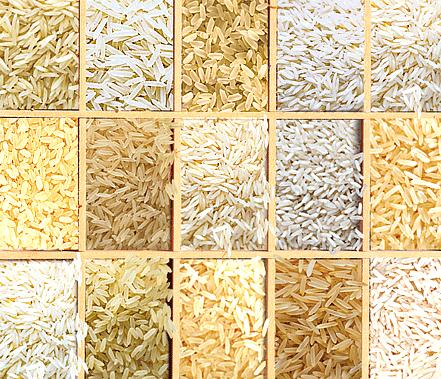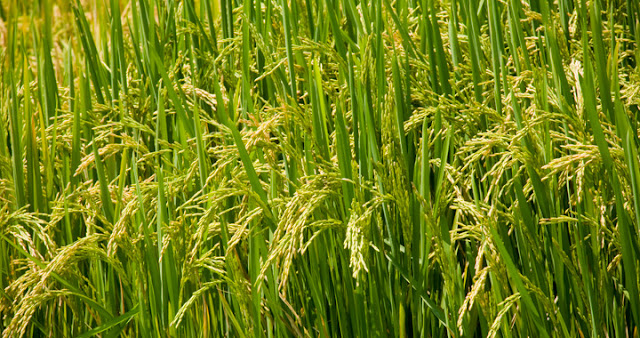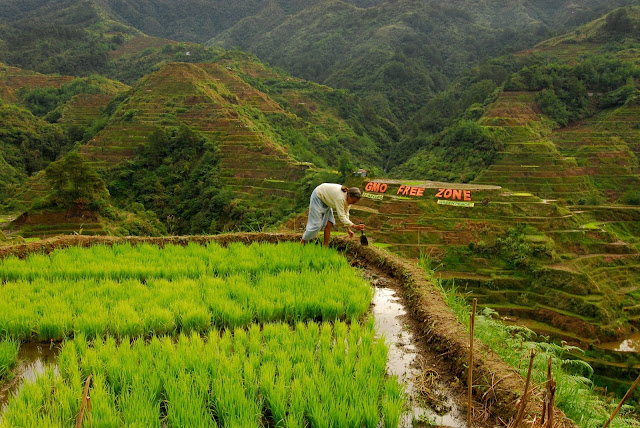Rice is one of the seven most important cereals and forms a staple food source for a large part of humanity. Various cereals, the trade as wild rice are referred belong botanically to rice genus.
Rice is grown in various ways. The upland rice without flooding the field, differs from flooded rice where the water level is not controlled, and irrigated rice where the presence of water and its level is controlled by the farmer. Field-grown rice is called paddy.
Today, the majority of all rice produced comes from China, India, Indonesia, Bangladesh, Vietnam, Thailand, Myanmar, Pakistan, Philippines, and Japan. Asian farmers still account for 92% of the world's total rice production.
Rice is grown in various ways. The upland rice without flooding the field, differs from flooded rice where the water level is not controlled, and irrigated rice where the presence of water and its level is controlled by the farmer. Field-grown rice is called paddy.
Today, the majority of all rice produced comes from China, India, Indonesia, Bangladesh, Vietnam, Thailand, Myanmar, Pakistan, Philippines, and Japan. Asian farmers still account for 92% of the world's total rice production.
Types
There are about ten thousand varieties of rice. They all fall into one of two subspecies of Oryza sativa, the variety Indica, is typically cultivated in the tropics, and japonica, which can be found both in the tropics and in areas of temperate climate and is characterized by its high starch content type amylose ( glutinous rice ). Generally, the more amylose contains a grain of rice, over temperature, water and time required for cooking.
Most rice were " polished "to release previously the cover protects (which becomes bran ), thus eliminating oils and enzymes in rice. The result is a grain of rice that is stable for months.
Categories for form
The usual categorization of the rice is cooking:
- Long grain rice, which can be between four and five times the length of its thickness. It has a high amount of amylose and therefore requires a relatively high proportion of water to cook. It is widely used in Chinese cuisine and Indian and is the biggest seller in the United States .
- Medium grain rice, which has a length between two and three times its thickness. Contains less amylose than long grain rice. It is the most used in Spanish cuisine (the " rice bomb "used in the paella . widely used in Latin America where the largest producers and consumers in order are Brazil , Colombia, Peru and Argentina, also used in the cuisine of Cuba, Puerto Rico and Dominican Republic, where it is a daily food consumption. Also used in Valencian cuisine and the Italian.
- Short grain rice, almost spherical appearance, which is usually found in Japan, in northern China and Korea. It is ideal for the preparation of sushi because the grains remain united even at room temperature.
- Wild rice, from the genus Zizania, used in both feeding and harvesting proceeds as wild crop. It has a long grain that can reach almost 2 cm long.
Categories for color / smell / touch
- Glutinous rice, also called sweet rice or sticky rice. It is, as its name indicates, and sticky after cooked grains stick together. Requires little water and tends to disintegrate if cooked too. It is used in the preparation of sweet dishes based on rice in Asia. The degree of 'stickiness' having a rice grain is measured by its amylose content.
- Aromatic rice is a group of long grain rice / medium that is characterized by scent due to the concentration of volatile compounds covers most rices of India and Pakistan called basmati ( fragrant , in Urdu language ), the rice jasmine.
- Pigmented rice : rice bran which has shaped pigments anthocyanins which give colors such as purple or red. In this type of rice, when the bran removed from the grain, the color disappears.
Categories as industrial treatment
Before being marketed, rice may receive certain treatments:
- Steamed rice, to which he has removed the water saved by slightly cooking . This type of rice has some advantages because the vitamins bran diffuse into the endosperm, making it more nutritionally complete. The precooked hardens the grain and does not break when being cooked. The parboiled rice starch has been gelatinized. This treatment is traditional in India and Pakistan.
- Parboiled rice or quick, cooked and cracked previously to facilitate final cooking, going from about twenty minutes to five.
Appearance
The culture of rice plant can form up to 30 blades. They are 50 to 160 cm high and each carry a narrow overhanging panicle , at 80-100 bloom spikelets can sit. A plant can thus carry almost 3000 fruit. The fruit is like all cereals from germ, endosperm, aleurone layer, seed coat and pericarp. When the rice last three together form the so-called silver skin.
The composition of rice varies naturally, both depending on the environmental conditions (soil, climate) as well as the cultivation techniques (fertilizers, pesticides).
Nutritional characteristics
The rice crop is low in sodium, calcium and potassium. Because of its poverty of sodium rice suitable for dehydration of the body for obesity and hypertension. Rice fruit contains mainly silver skin the vitamins B1 and B2. Rice contains a relatively small amount of protein (compared to other grains), as the content of gluten is around 7% by weight, compared to 12% of the wheat of low protein content. However, the rice has more lysine than wheat, the corn and sorghum.
Preparation as food
In most cultures the rice is clean and it deletes the bran layer (rich in silicon ) being the caryopsis or grain. Generally rice is cooked by applying heat and moisture to the grains.
Rice planting in the Philippines
~~~
~~~



No comments:
Post a Comment